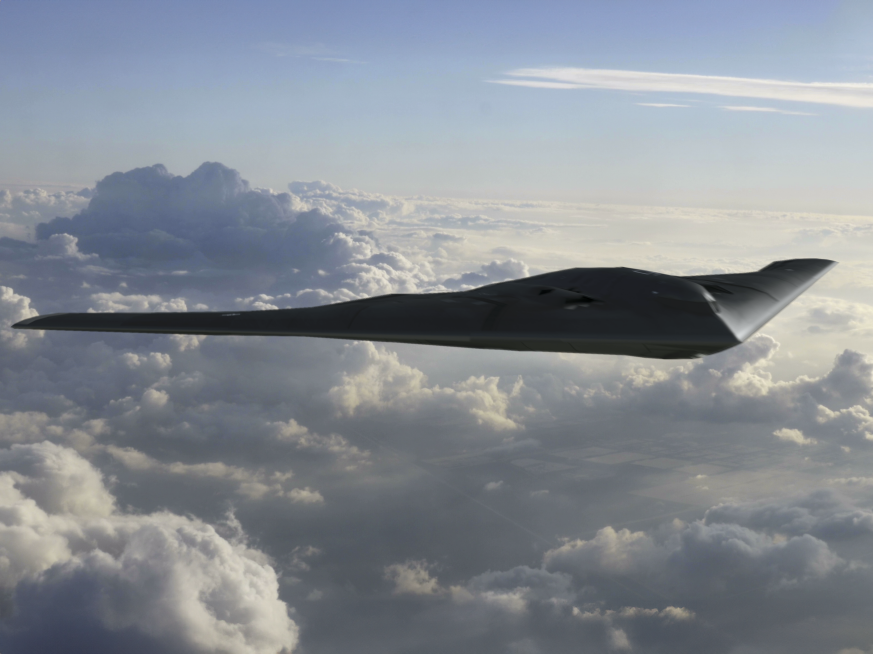The consequences of a US overreaction to the perceived threat of terrorism
Less than a week after September 11, 2001, the then US vice president Dick Cheney told NBC’s Tim Russert that the United States would “have to work sort of the dark side.” He explained that the Bush administration would “spend time in the shadows” because “a lot of what needs to be done…will have to be done quietly, without any discussions.”
Four days later, the then US president George W. Bush warned the rest of the world—and especially US allies and partners—that there could be no second-guessing of the United States’ methods because its motives were pure: “Every nation, in every region, now has a decision to make,” Bush declared before a joint session of Congress, and to raucous applause, “either you are with us, or you are with the terrorists.”
Over the course of the next several months, the scope and scale of those counterterrorism measures came more clearly into view. Cheney’s “One Percent Doctrine”—initially framed narrowly on the “1 percent chance that Pakistani scientists are helping al-Qaeda build or develop a nuclear weapon”—effectively expanded to encompass a range of terrorism-related threats. Given the danger, Cheney explained, “we have to treat it as a certainty.” The cost of overreaction would be low, especially when contrasted with the risks of underreaction, which, according to Cheney, would be catastrophic.
Twenty years hence, we can and should assess both of these propositions.
Some costs are easily quantified. Post-9/11, military spending rose precipitously. Reliable estimates calculate the costs of the wars in Iraq and Afghanistan, plus many other sundry counterterrorism campaigns around the world, at well over $6 trillion—and still counting. The cost in lives now vastly exceeds those lost on 9/11 in New York City, at the Pentagon, and on United Airlines Flight 93 near Shanksville, Pennsylvania. According to numbers compiled by Brown University’s Watson Institute, more than 7,000 US servicemen and women, plus nearly another 8,000 contractors in the employ of the US government, have been killed in major war zones since 9/11. The total number of people killed globally is reliably estimated at 801,000, including more than 387,000 civilians.
But the US war effort also included torture and indefinite detention of terror suspects abroad, and warrantless surveillance and regular violations of Americans’ civil liberties at home. And, as for Cheney’s admission that the war on terror would mostly be fought in the shadows, the veil of post-9/11 secrecy exacerbated an already acute overclassification problem, and may even have contributed to declining trust in American democracy. Restoring this trust will take a multifaceted effort but is undermined by the belief that information is routinely withheld from the public for no good reason.
One can judge these policies—individually or collectively—as mostly justified and aimed at preventing future attacks in the United States. In the immediate aftermath of 9/11, after all, there was a justifiable concern that others would use passenger planes as guided missiles, killing many thousands—or more (e.g., Cheney’s dreaded al-Qaeda-affiliated nuclear scientist).
But in the twenty years since 9/11, we now know that bathtub drownings, falling furniture, and automobile collisions with animals (especially deer) have posed a far greater risk to Americans than Islamist extremist terrorists. Even the most fervent defenders of US counterterrorism policies would struggle to prove that every measure implemented after 9/11 was essential.
Nevertheless, many Americans might still assess the harms associated with US counterterrorism policies to have been completely unintentional, and modest—especially in light of the catastrophic harm that a second 9/11 could have unleashed upon the United States.
But the Global War on Terrorism also appears to have undermined the United States’ reputation—and this could have far-reaching geopolitical consequences.
In the twenty years since 9/11, for example, favorable attitudes toward the United States have declined globally, with some of the sharpest declines in key US allies like Germany and the United Kingdom. A recent RAND report observes “a marked reduction in regard for and confidence in the United States among foreign publics, notably including those in countries that Washington has long counted on to follow its lead.”
But in the twenty years since 9/11, we now know that bathtub drownings, falling furniture, and automobile collisions with animals (especially deer) have posed a far greater risk to Americans than Islamist extremist terrorists. Even the most fervent defenders of US counterterrorism policies would struggle to prove that every measure implemented after 9/11 was essential.
The Eurasia Group Foundation’s (EGF’s) polling connects the negative trends to the post-9/11-era wars. While “US soft power (e.g., connection to a country’s diaspora in the US and consumption of American media)” was closely correlated to pro-American sentiment, EGF’s Mark Hannah and Caroline Gray reported that “resentment over US hard power (e.g., belief that the US should end its decades-long war in Afghanistan or that a more restrained US foreign policy would most make American democracy more attractive) contributed significantly to anti-American sentiment.”
Declining favorability ratings have a direct impact on the United States’ ability to lead on a range of issues wholly unrelated to terrorism, including democracy promotion, advancing human rights, and addressing transnational challenges such as climate change and migration.
And the compromises that the United States made at home to deal with the supposed terror threat have also been twisted to nefarious ends.
In his latest book, After the Fall, former US Deputy National Security Advisor Ben Rhodes tells the story of the then US president Barack Obama’s plan to release several Uighurs who had been unjustly held for years at the US military prison in Guantanamo Bay, Cuba. None of the prisoners was found to pose a danger to US national security, but there were legitimate concerns that they might be persecuted if they were returned against their will to China. When it was suggested that the innocent men be released in the United States, however, a chorus of voices rose in protest. US Sen. Lindsey Graham (R-SC), for example, alleged that the Uighurs could not be assimilated into the United States due to their “radical religious views.” Chinese officials, Rhodes notes, have employed a similar logic to justify their persecution campaign against Uighurs in China’s Xinjiang province.
To be sure, the mistreatment of a handful of innocent men caught up inadvertently in the earliest days of the US war in Afghanistan cannot compare to Beijing’s deliberate and systematic assault on the rights and liberties of perhaps two million men, women, and children. Yet the flawed rationales for refusing to treat human beings with dignity—based on their religious beliefs or ethnicity or country of origin—because they supposedly pose a grave security risk, can and has been employed by a host of autocratic governments from Beijing to Budapest. Looking ahead, Americans should be mindful of how their policies, or even simply their rhetoric, can be used to justify such human rights abuses, and commit to modeling behavior that once distinguished the United States as a global leader.
What other lessons should US leaders take away from the last twenty years? And how should those lessons inform policy?
US officials should commit the United States to being an exemplar of the rules-based order, and pledge to abide by global norms, even when that might be politically unpopular. Simply put, the United States should not claim a right to obey the rules when it suits but ignore them when it does not.
In an earlier era, the United States might have been forgiven for engaging in such double standards and hypocrisy, but that is no longer the case. In a world of many capable actors, the United States cannot expect to lead a rules-based order while believing that it can reserve for itself the right to decide who must follow those rules, or when those rules can be ignored.
Finally, and perhaps most importantly, US policy makers should strive to place various threats to public safety in proper perspective. Violating the rules can appear justified when the risks seem existential. But the United States faces few such threats, and US government officials should resist the urge to hype certain dangers in order to rally a supposedly complacent public. Deliberate overreaction is rarely justified and can easily produce a momentum for counterproductive policies that have far-reaching and unintended consequences.
That certainly seems to have been the case since 9/11.
* * *

Christopher Preble serves as co-director of the New American Engagement Initiative in the Scowcroft Center for Strategy and Security. In this role, he leads a team of scholars who challenge prevailing assumptions surrounding US foreign policy, and who offer a range of policy options that go beyond the use of force and coercion. His own work focuses on the history of US foreign policy, contemporary US grand strategy and military force posture, alliance relations, and the intersection of trade and national security. In addition to his work at the Atlantic Council, Preble co-hosts the “Net Assessment” podcast in the War on the Rocks network, and he teaches the US Foreign Policy elective at the University of California, Washington Center. He has also taught history at St. Cloud State University and Temple University. He is a life member of the Council on Foreign Relations. Before joining the Atlantic Council, Preble was vice president for defense and foreign policy studies at the Cato Institute from 2011 to 2020, and director of foreign policy studies from 2003 to 2011. Preble was a commissioned officer in the US Navy, and served aboard the USS Ticonderoga (CG-47) from 1990 to 1993. Preble graduated from George Washington University in 1989 and received a PhD in history from Temple University in 2002.
Generously Supported By

Explore “The future of counterterrorism” series
Engage with our series as we continue forecasting the future of counterterrorism
Learn more about the Middle East Programs
Learn more about Forward Defense

Forward Defense, housed within the Scowcroft Center for Strategy and Security, generates ideas and connects stakeholders in the defense ecosystem to promote an enduring military advantage for the United States, its allies, and partners. Our work identifies the defense strategies, capabilities, and resources the United States needs to deter and, if necessary, prevail in future conflict.
Image: U.S. Navy Hull Maintenance Technician 2nd Class Marsha Garcia, assigned to Coastal Riverine Squadron (CRS) 1, provides ramp security as a 34-foot patrol boat is launched at Camp Lemonnier, Djibouti, June 24, 2014, before a mission to escort an American ship to the Port of Djibouti. CRS-1 conducted anti-terrorism, force protection and personnel recovery missions in the Camp Lemonnier area of responsibility. (DoD photo by Mass Communication Specialist 1st Class Julia A. Casper, U.S. Navy/Released)